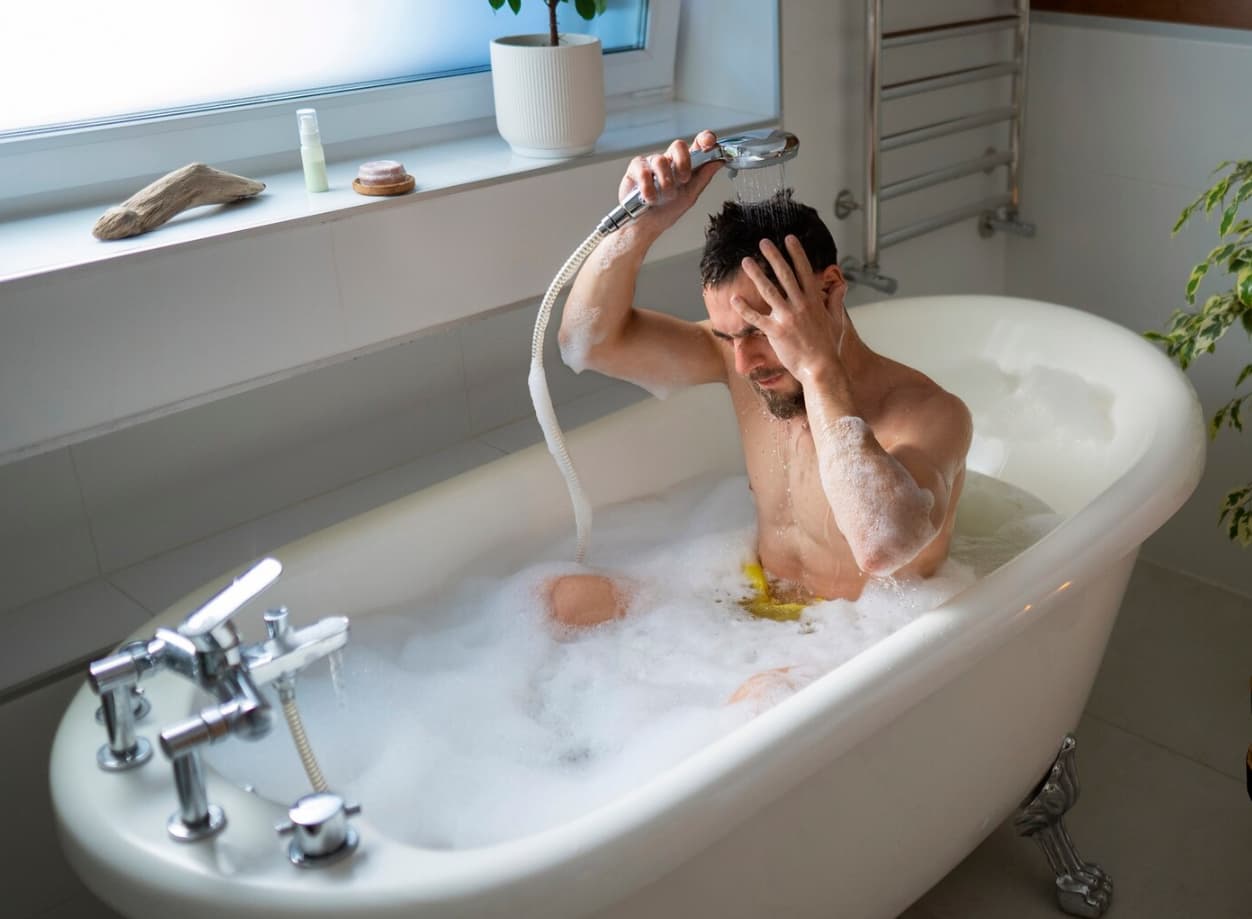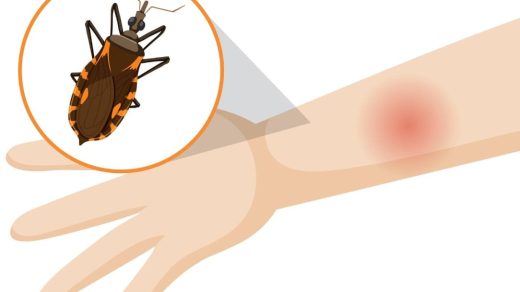Dealing with a herpes outbreak is no fun. Those painful blisters and sores can get in the way of life. One common question folks have is whether it’s safe to take a dip in the hot tub during an outbreak. After all, nothing beats sitting in some warm, bubbling water to relax!
But here’s the thing – hot tubs create an environment that makes it easier for the herpes virus to spread. Between the heat, moisture, and sharing close quarters with other people, using a hot tub during an outbreak poses some risks.
Now does that mean you have to avoid hot tubs forever if you have herpes? Not necessarily. With the right safety precautions, it may be possible to safely enjoy your hot tub again after an outbreak clears.
Key things like maintaining proper sanitation and disinfectant levels can reduce (but not eliminate) the contamination threat.
Can I Go in a Hot Tub with Herpes Outbreak?

This guide covers all you need to know about balancing the risks and rewards of using hot tubs if prone to recurrent herpes outbreaks. We’ll also provide some handy tips to prevent transmission, deal with symptoms, and know when it’s safe to soak to your heart’s content once again!
Understanding Herpes Viruses
Herpes is caused by two types of viruses:
- HSV-1 – Usually causes oral herpes with cold sores around the mouth
- HSV-2 – Usually causes genital herpes with sores in the genital area
How Herpes Spreads:
- Direct skin-to-skin contact
- Bodily fluids like saliva or semen
- Sharing objects like utensils or razors
Herpes viruses can’t survive long outside the body and are killed quickly by heat and drying out. However, the warm, moist environment of hot tubs allows them to survive longer and increases transmission risk.
The Dilemma: Hot Tubs During an Outbreak
Hot tubs pose a tricky dilemma during a herpes outbreak:
Potential Benefits:
- Warm water soothes pain and inflammation
- A relaxing environment reduces stress triggering outbreaks
Potential Risks:
- Heat and humidity allow the virus to thrive
- Shared water spreads infection to others
- Chemicals may irritate open blisters
So how dangerous is it really to use a hot tub during an active outbreak?
Assessing the Risks of Using a Hot Tub in Herpes Outbreak
Several factors influence the risk of using a hot tub during a herpes outbreak:
Hot Tub Environment
- Ideal conditions for herpes: Warm temperatures around 100°F and high humidity allow viruses to survive longer outside the body.
- Shared water spreads infection: Herpes viruses can spread through contaminated water through microscopic skin fissures or mucous membranes.
- Water chemicals: Chlorine and bromine can irritate open blisters, causing further pain and potential scarring.
Type and Severity of Outbreak
- Active outbreak: Using a hot tub during an active outbreak with uncontrolled shedding of the virus poses the highest risk for transmission.
- Initial outbreak: The large number of sores during a first clinical outbreak increases infection risk.
- Small localized outbreak: A minor recurrence with only a few localized blisters poses less risk.
Precautions Taken
- Covering outbreaks: Waterproof bandages over all sores reduce shedding viruses into the water.
- Avoiding shaving: Preventing nicks or cuts lowers the chance herpes enters through broken skin.
- Practicing hygiene: Rinsing off thoroughly before entering and not sharing towels reduces contamination.
Safety Recommendations
Due to the risks, certain precautions are recommended regarding hot tub usage during herpes outbreaks:
- Avoid completely: Do not use hot tubs at all during severe, active outbreaks.
- Wait for it to heal: Only use a hot tub once all blisters and sores have completely healed.
- Use suppressive therapy: Medications can accelerate healing time and reduce recurrence risk.
- Use private hot tubs: Shared public hot tubs pose the greatest risk for transmission.
- Cover outbreaks: Waterproof bandages are essential for containing virus shedding.
- Shower before and after: Rinsing off removes contaminants and chemicals from the skin.
- Maintain proper sanitization: Ensure hot tubs have adequate disinfectant levels.
Tips To Prevent Transmission
If hot tub use can’t be avoided during an outbreak, these tips reduce transmission risk:
Before Entering the Hot Tub
- ✔ Wait until fever and flu-like symptoms have passed
- ✔ Allow blisters to dry into scabs as much as possible
- ✔ Cover outbreak areas thoroughly with waterproof bandages
- ✔ Take an antiviral medication to reduce shedding
- ✔ Shower and rinse off completely beforehand
While Using the Hot Tub
- ✔ Keep outbreaks covered and avoid submerging scabs
- ✔ Don’t share towels or let uncovered rashes contact surfaces
- ✔ Avoid intimate contact or activities irritating sores
- ✔ Limit time in the tub to 15 minutes or less
- ✔ Rinse off in shower immediately afterwards
Maintaining the Hot Tub
- ✔ Ensure chlorine or bromine levels meet safety standards
- ✔ Change filters regularly according to the manufacturer
- ✔ Shock tub weekly with sanitizer to kill microbes
- ✔ Wash hands before testing water and adjusting chemicals
When is it Safe to Use Hot Tubs Again?
It’s crucial to wait until all signs of the herpes outbreak have fully cleared up before considering hot tub usage again. Doctors recommend waiting approximately 5-14 days after all symptoms resolve to use public hot tubs again.
However, recurrence risk remains for several weeks after an outbreak so consider these factors:
- Outbreak severity – Wait longer if it was a severe initial outbreak.
- Healing signs – All sores and scabs have disappeared without new blisters developing.
- Doctor’s advice – They may recommend getting a viral culture test first.
Using daily antiviral suppressive therapy under a doctor’s supervision can reduce recurrence risk and speed up waiting times between outbreaks as well.
But remember that herpes viruses never completely leave the body after an initial infection. Periodic dormant recurrences may still happen under the right conditions. Carefully balance the benefits against potential transmission risks before using public hot tubs again after a herpes outbreak.
The Verdict: Don’t Risk It!
Due to the contagious nature of herpes combined with the ideal warm, wet conditions hot tubs provide for spread, it’s simply smarter not to use public or shared hot tubs during an active outbreak. The benefits rarely outweigh the potential discomfort and transmission dangers.
Instead, wait for all signs of the outbreak to fully heal under medical care. Daily antiviral treatment can accelerate this process. Avoidance or extreme precautions should be taken for private hot tub use as well.
While warm water might temporarily soothe pain from herpes blisters, it also encourages viral spread. Make sure no signs of active infection remain and maintain situational awareness of recurrence risk factors when considering hot tub usage again.
Resources:
- https://www.chicagotribune.com/1994/07/11/hot-tub-and-herpes-could-be-an-uneasy-mix/
- https://www.washingtonpost.com/archive/local/1983/12/09/herpes-virus-can-contaminate-hot-tub-areas-journal-says/378838e9-e663-4b50-bce7-8902c6f44ada/
More Useful Guides on Herpes Outbreak:
Conclusion
Herpes viral transmission risk is significantly heightened due to the warm, moist environment of hot tubs. As a lifelong infection capable of asymptomatic shedding during dormant periods as well, caution must be taken regarding activities increasing spread likelihood during an active outbreak.
To balance therapeutic benefits against public health, it’s advisable not to use hot tubs at all until outbreak symptoms fully resolve under doctor supervision. Suppressive medications, hygiene precautions, and proper tub maintenance may provide some risk reduction but never complete safety.
In the end, refrain from shared hot tub use while contagious and avoid triggering factors weakening immunity afterward. With thoughtful precautions guided by medical advice, it’s possible to manage periodic herpes outbreaks safely while still enjoying hot tubs responsibly.



